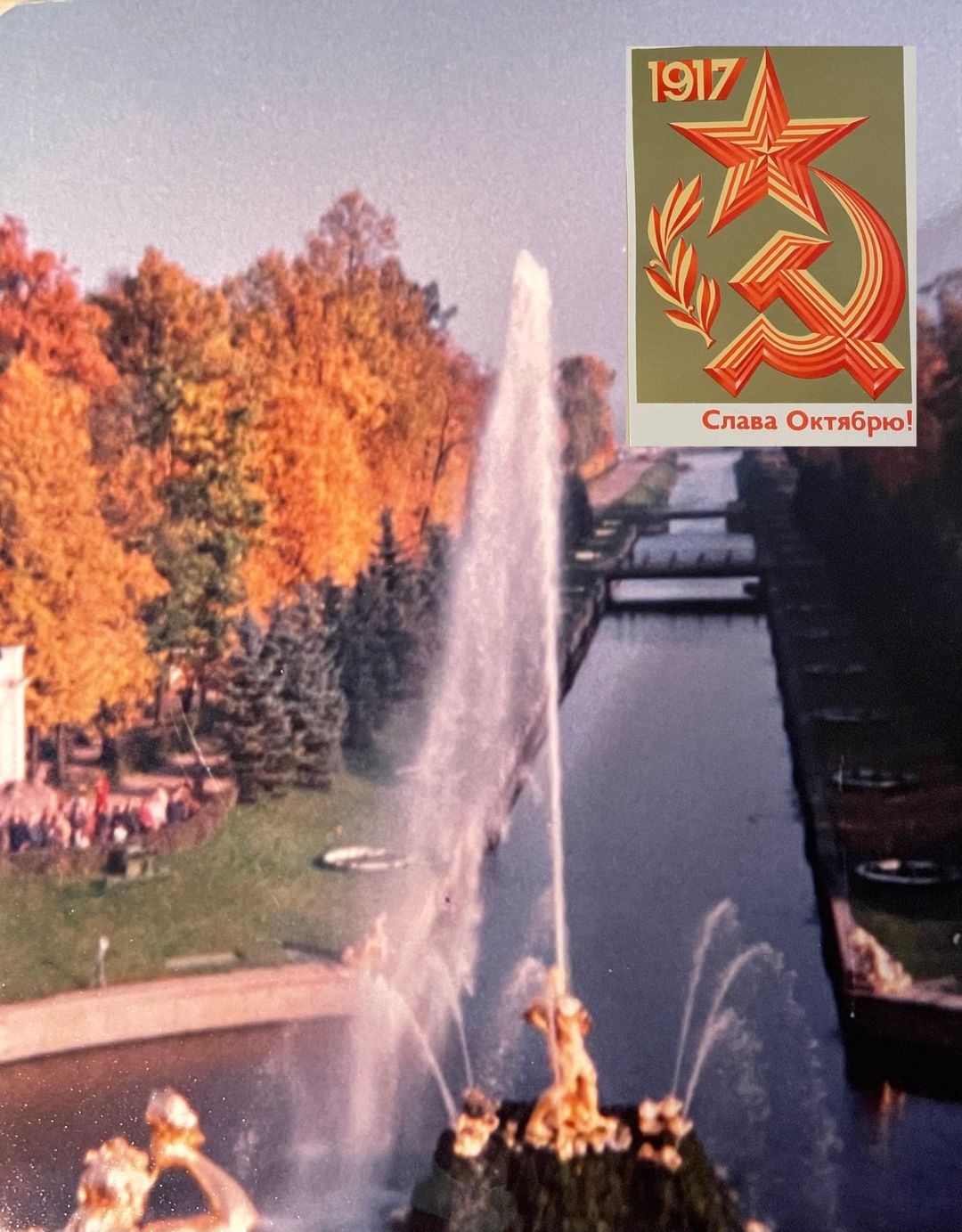APRIL 27, 2022 – As I wrote in my letter home, “The aesthetic shortcomings of my accommodations, though, were compensated a thousandfold by the beauty of Leningrad itself . . . The gilded dome of the imposing St. Isaac’s Cathedral, the tall, narrow gold spire of Peter and Paul Fortress, and the striking gold tower-spire of the Admiralty dominate the Leningrad skyline. Low-profile, aesthetically-pleasing bridges span the proud Neva River and cross the sleepy canals round about the city.”
I went on to describe one of the world’s great art museums. “The famous Hermitage is massive but not particularly remarkable architecturally*. Inside, however, is the most brain-blowing art collection outside of the Louvre. I spent four hours racing through the grand halls of Dutch Masters, Italian Renaissance, French Impressionists, El Greco, Restoration Period furniture, 18th century porcelain, et cetera ad infinitum.”
On a most gorgeous autumn day, I ventured down the Neva River to the “Russian Versailles”—the Grand Palace inspired by Peter and expanded by subsequent monarchs; meticulously reconstructed after wholesale ruin by the Germans during WW II.
In my letter, I described my impressions of this central attraction: “But definitely the most beautiful attraction in Leningrad is Petrodvorets, the Tsarist palace some distance from the center of the city. An hour’s ride by hydrofoil took me to a fairyland of man-made creations harmonized with nature. The autumn colors had peaked just minutes before our arrival—I sweat to it!—and the gold maples formed a pleasing contrast against deep green spruce and a clear blue sky. In a conspiracy of color, the maple leaves accentuated the gilded statuary and frescoes that adorned the palace. The crowning moment came at precisely 10:00 h., when before my astonished eyes and ears, the enormous collection of fountain-statues erupted in full force to the music of Peter Ilyich Tchaikovsky!! How grand life can be!!!”
What the small-print, margin-to-margin, 24-page letter omitted was a particularly memorable detail. When the fountains went off, I was standing next to a group of visiting Vietnamese naval officers. The guy standing at my left elbow reacted with the same mirthful surprise as I exhibited. We turned to each other, and without common speech, joined in the universal language of laughter. I’ll never forget how the officer’s face filled with childlike amusement. He had no clue that I was from America (I was wearing my Czech jeans and Australian jacket)—his country’s sworn enemy (as a naval officer visiting Russia in 1981, just six years after the American departure from South Vietnam, he’d definitely fought on the side of North Vietnam). I thought immediately of my own Vietnamese “brothers,” Long and Thuan, sons of a tailor from Danang, refugees whom my parents had sponsored in 1975. Thuan had graduated top in his class from the South Vietnamese Naval Academy and skippered a PT-boat up the Mekong in the last days of the war. There among the “prankster fountains” of Petrodvorets, I pondered the tragic divisions among humanity—even between people, north and south, of the same country. (Cont.)
_____________________
*In my unschooled opinion at the time. The Hermitage Museum is housed in the massive Winter Palace of Baroque design. The interior, especially, is quite remarkable architecturally.
(Remember to subscribe to this blog and receive notifications of new posts by email.)
© 2022 by Eric Nilsson
